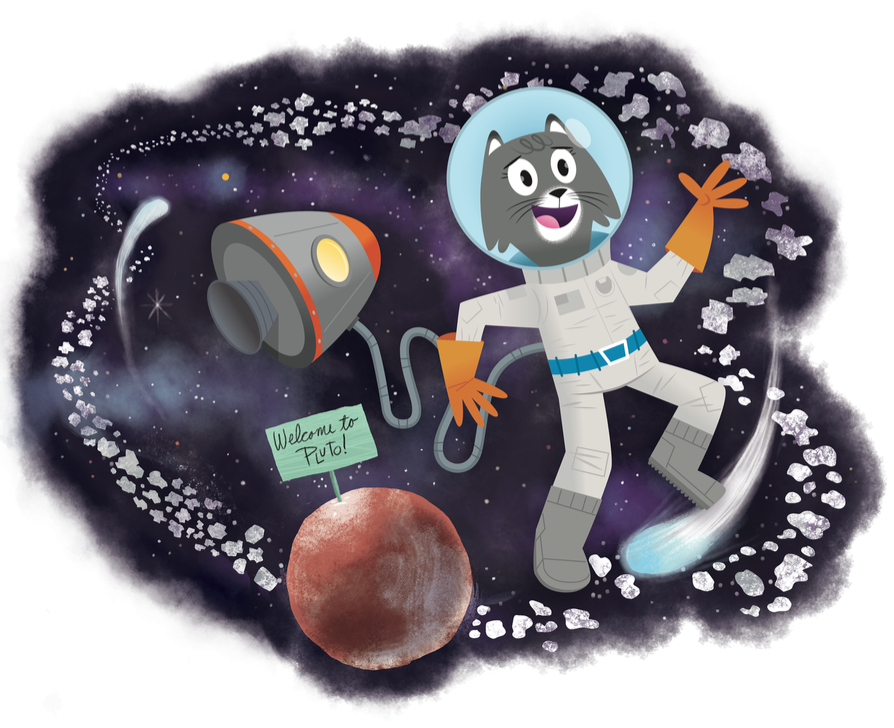Dear Zaara,
You might say the Kuiper Belt is the frozen frontier of our solar system. Out beyond Neptune’s chilly orbit, this saucer-shaped region is home to Pluto, billions of comets, and other icy worlds.
“The Kuiper Belt is really the edge of knowledge,” said my friend and astronomy professor Guy Worthey when we met up in the Washington State University planetarium.
“Out there it’s a little dim,” Worthey said. “We are pretty far from the Sun.”
In fact, it’s about 3 billion miles away. Even at the speed of a jet airplane, it would take more than 680 years to travel from Earth to the outer solar system. Fortunately, spacecraft like NASA’s New Horizons can get there much faster.
Just last year, the world watched as New Horizons flew past Pluto and sent us the first up-close pictures of the dwarf planet. Now, it won’t be long before we head even deeper into the Kuiper Belt.
“Everything is going to be dark,” Worthey said. “But you’ll see these icy bodies. They’ll be of different sizes. There’ll be lots of little ones and some big ones.”
 Many astronomers think there are 100,000 objects out there bigger than 60 miles wide, Worthey adds.
Many astronomers think there are 100,000 objects out there bigger than 60 miles wide, Worthey adds.
“They are sort of a dirty snowball composition,” Worthey said.
Just 15 years ago astronomers weren’t really sure if this part of the solar system even existed.
In the 1950s, Gerard Kuiper (KI-purr), a Dutch astronomer, was curious about comets, particularly where they were coming from and how they traveled through the solar system. He thought the outer solar system just couldn’t be empty.
About 40 years later, two scientists working at an observatory in Hawaii detected the first object in the Kuiper Belt aside from Pluto and its moon Charon. They had been looking for five years when they finally found an ice sphere more than 150 miles wide.
Ever since, astronomers have been using math and science to detect other distant objects. They’ve detected other dwarf planets like Pluto, including Eris, Haumea, and Makemake.
They’ve also found Plutinos that, like Pluto, are small worlds that have been caught in Neptune’s orbit.
“As you cruise by one of those things, they’ll look like spheres or worlds,” Worthey said. “They are quiet, they are on slow orbits.”
Astronomers are fascinated with these places for a couple of reasons. One is because the region may hold clues about the way solar systems form. Other scientists are particularly interested in the comets. Some wonder if some of these icy objects fell from the Kuiper Belt, and then melted in the Sun’s heat to form Earth’s oceans.
There’s also been a buzz about finding a new ninth planet in the Kuiper Belt or beyond. Though, there’s no proof of it yet, it’s an exciting prospect. If there is another planet in the Kuiper Belt, we’ll have to go find it with a spacecraft or a super huge, powerful telescope.
Sincerely,
Dr. Universe